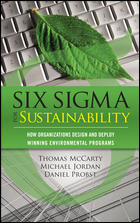Coordinate measuring machines (CMMs) can automate the measurement process and consequently eliminate quality inspection bottlenecks. The highly adaptable tools can measure a wide range of parts and materials and quickly adapt to production changes.
CMMs can execute dimensional analysis, tooling certifications, and CAD comparison and work with complex parts more efficiently than similar tools.
Known as extremely accurate and repeatable measurement tools, CMMs rapidly recognize errors and can funnel data back into the manufacturing loop for continuous improvement.
The CMM is more than 60 years old, which means it has stood the test of time and contributed to an industrywide understanding and trust in CMM technology. Today, the CMM is still the go-to for quality and process verification across all major manufacturing sectors.
The adaptability of the CMM helps manufactures to examine a wide range of components by applying various sensor technologies, including touch trigger, and scanning contact probes, non-contact laser/vision sensors, and roughness sensors. Plus, there are myriad CMM software options available to support manual or automated measurements. CMMs also simplify complex surface scanning, and 3D modeling.
Experts consider it to be a unanimously accepted dimensional inspection tool that offers a high level of flexibility.
CMMs are also less disposed to to operator error than hand gages. They offer single-source inspection instead of multiple inspection devices, sustain a constant workflow and repeat measurement routines with precision.
As the skills gap continues to impact the manufacturing field, skilled CMM users and programmers are harder to come by. In response, CMM companies have built the tools to be easier to operate and program. That means that they are increasingly accessible to anybody in a production setting.
Today’s CMMs have advanced accuracy performance specifications, lighter and stiffer frames, smaller air bearing gaps, higher temperature stability and improved error mapping technology. Not bad for more than half-a-century of development!


